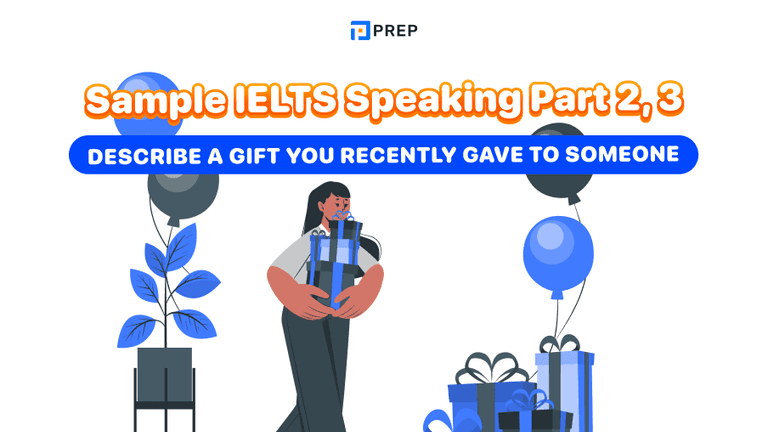SMART CONTEXT Method: Definition and Applications
The SMART CONTEXT method is a practical approach to learning English by combining clear goals with real-life context. This guide explains its definition, key principles, and step-by-step process, highlights its pros and cons, and provides resources to apply it effectively in study or exam prep.

I. What Is the SMART CONTEXT Method?
The SMART CONTEXT method is a modern approach to language learning that combines the SMART goal setting framework with context-based learning principles. It is designed to help learners acquire language faster and more effectively by placing words, phrases, and structures into meaningful real-life situations—rather than learning isolated vocabulary or grammar rules.
SMART CONTEXT is an integrated learning method that encourages learners to:
- Set Specific, Measurable, Achievable, Relevant, and Time-bound goals
- Learn language through practical contextual situations rather than memorization
By aligning goal-driven learning with real-world application, this method bridges the gap between what learners study and how they use English in real communication — connect your points with transitioning ideas in ielts speaking.
The primary goal of the SMART CONTEXT method is to make learning:
- Purposeful: Every lesson or activity targets a defined communicative outcome
- Relevant: Language is learned in situations that reflect daily interactions (e.g., ordering food, attending interviews, writing emails)
- Transferable: Learners can immediately apply what they study to personal, academic, or professional situations
This method supports all four language skills—listening, speaking, reading, and writing—by embedding them within a situation-driven learning cycle. It also helps reduce learner fatigue and increase engagement because content feels naturally useful, not abstract — strengthen fluency and coherence ielts speaking.

Benefits of Using the SMART CONTEXT Method
- Greater retention of vocabulary and grammar, since words are tied to meaningful scenarios
- Improved fluency and response time, especially in conversational settings
- Boosted learner motivation, as progress is tied to real goals
- Built-in personalization, which adapts learning to the learner’s needs and real-life context
Potential Limitations
- May require more lesson planning or creative thinking from teachers initially
- Less effective if there’s no structured follow-up or feedback system
- Learners unfamiliar with self-directed learning may need guidance to set SMART goals correctly
Despite these challenges, when implemented properly, the SMART CONTEXT method offers a flexible, learner-centered, and highly practical approach to mastering English in a globalized world.
II. How Does the SMART CONTEXT Method Work?
The SMART CONTEXT method functions by integrating two powerful elements of learning: goal-driven focus and real-life contextual practice. Instead of studying English in a linear or theoretical way, learners engage with the language in situations that mirror real-world communication—guided by specific and measurable personal goals.
This method is built on two essential components:
- The SMART framework for clear, focused, and trackable learning goals
- The CONTEXT principle, which places language inside practical, everyday scenarios
Together, they form a system that enables active learning, high motivation, and long-term retention.
1. Core Principles of the Method
The SMART CONTEXT method is founded on the integration of two key concepts: the SMART goal-setting framework and context-based language learning. Together, they create a practical system that helps learners acquire English in a focused, relevant, and purposeful way.
SMART Goal-Setting Framework
Each learning activity or language task within this method is guided by SMART goals:
- Specific: The learning objective must be clear and well-defined (e.g., “learn how to introduce myself at a job interview” instead of “improve speaking”)
- Measurable: Progress can be tracked through observable outcomes (e.g., “use 5 new phrases correctly during a speaking task”)
- Achievable: The goal must be appropriate for the learner’s current level and realistic in scope
- Relevant: The goal should reflect the learner’s real-life needs (e.g., for work, travel, or academic purposes)
- Time-bound: Each objective must have a deadline or time frame (e.g., “achieve this within one week”)
Context-Based Learning
Rather than teaching vocabulary or grammar in isolation, this method places the language inside real-world scenarios (contexts) where it is naturally used. Learning within context helps:
- Reinforce memory and understanding
- Develop better intuition for word choice and sentence structure
- Improve fluency and transferability from classroom to real life
Examples of useful learning contexts include:
- Booking a hotel room
- Ordering food at a restaurant
- Giving directions
- Writing a professional email
- Making small talk at a networking event
By combining SMART goals with these natural contexts, learners stay motivated, can measure their progress clearly, and are more likely to retain and apply the language confidently in real situations — compare patterns in english conversation.

2. Step-by-Step Process
To apply the SMART CONTEXT method successfully, learners or instructors follow a structured process that aligns language goals with real-life communication situations. This approach can be used for both independent learning and classroom instruction.
Step 1: Define a SMART Goal
Start by identifying a language goal that is:
- Specific: Focused on one task (e.g., introduce yourself in a meeting)
- Measurable: Track progress (e.g., use 5 targeted phrases correctly)
- Achievable: Matches your current English level
- Relevant: Related to your real-life needs (e.g., workplace, exam, daily life)
- Time-bound: Set a deadline (e.g., within one week)
Example: “By Friday, I want to be able to order food at a restaurant in English with at least 80% accuracy.”
Step 2: Select a Real-World Context
Choose a common communication setting that matches your learning goal. Some examples:
- Making a phone call
- Attending a job interview
- Asking for help at the airport
- Describing your symptoms to a doctor
The context helps anchor the language, giving meaning to each word or phrase — prepare opinions with answer ielts speaking part 3.
Step 3: Identify Target Language Content
Extract the vocabulary, phrases, grammar, and pronunciation features most commonly used in that context.
- Study sample dialogues, audio materials, or videos
- Take note of frequently used expressions and sentence structures
- Focus on natural usage, functional phrases, and tone
Step 4: Practice and Simulate the Situation
Engage in active practice using one or more of the following:
- Role-play: Practice with a partner or teacher
- Shadowing: Repeat after audio to improve fluency
- Speaking drills: Practice key phrases aloud
- Interactive tools: Record yourself, use apps, or join conversation groups
Try to simulate the situation as realistically as possible to build confidence — add timed drills from practice ielts speaking.
Step 5: Reflect and Adjust
After completing the practice session:
- Evaluate your own performance or ask for feedback
- Identify strengths and areas to improve
- Update your next SMART goal based on your progress
Example: After practicing a restaurant dialogue, you realize you're confident in greetings but need to work on menu vocabulary—this can become your next focus.
Using this step-by-step process regularly helps make English learning personalized, goal-oriented, and deeply connected to real-life communication. It encourages learners to take ownership of their progress while building practical language skills for daily use.

III. SMART CONTEXT in Courses and Learning Materials
The SMART CONTEXT method is gaining popularity in language education because it aligns naturally with modern, learner-centered approaches. Today, a growing number of online courses, training programs, and teaching materials are built around—or strongly influenced by—this context-based, goal-driven methodology.
Where to Learn with SMART CONTEXT?
Many English language platforms and institutions are incorporating SMART CONTEXT principles into their curriculum, especially in programs focused on communication, business English, or functional fluency.
Examples of learning environments using this method:
- Online language platforms: Courses that focus on communication through real-life topics or task-based lessons (e.g., talking to customers, solving problems, handling interviews)
- Instructor-led programs: Language centers where learners set weekly SMART goals tied to scenarios like traveling, working abroad, or passing an English exam
- Corporate training programs: Soft-skill English courses for employees using workplace simulations and performance-based objectives
- Exam prep systems: Programs that breakdown IELTS, TOEIC, or VSTEP preparation into goal-aligned modules (e.g., “complete 3 listening tasks related to airport announcements by Friday”)
When evaluating a course, look for signs that the program:
- Sets clear, trackable language goals
- Uses realistic situations as lesson foundations
- Encourages active use of language through interaction and reflection
Books, Videos, and Resources
While SMART CONTEXT as a full-branded methodology may not yet be published widely as a standalone textbook, the core principles are increasingly present in many modern ESL learning resources.
Types of learning materials aligned with SMART CONTEXT:
- Topic-based textbooks: Books organized around functions and tasks (e.g., English for Everyday Situations, Speaking Naturally, English for Life)
- Video content: YouTube channels or apps that teach language in everyday conversations (e.g., restaurant scenes, job interviews, travel scenarios)
- Printable worksheets: Situational practice sets with a “real-world goal” focus — perfect for classroom or self-study
- Custom goal-setting tools: Journals or planning sheets that guide learners through SMART goal creation week-by-week
Additionally, teachers and learners can create their own materials by:
- Writing real-life dialogue scripts
- Planning speaking tasks based on daily routines
- Breaking exam skills into short-term SMART-based goals
Not every learner has a strong foundation in language use, nor the confidence to express ideas naturally in English. For those scoring below 6.0, writing or speaking with advanced vocabulary and structure can be especially challenging—and following generic templates often leads to rigid or inaccurate responses. That’s why the recommended approach is to study high-quality samples created by experienced, high-scoring instructors.
You can refer to the IELTS Advanced Speaking-Writing course by PREP's teacher, where each lesson includes a sample linked to a specific topic. These samples are not only well-structured but also modeled around real-life context. From there, you can apply the SMART CONTEXT method to improve how you prepare for the IELTS Speaking test and develop more natural, goal-oriented responses across a variety of common themes.

Hi I'm Chloe, and I am currently serving as an Product Content Administrator at Prep Education. With over five years of experience in independent online IELTS study and exam preparation, I am confident in my ability to support learners in achieving their highest possible scores.
Comment
Premium content
View allPersonalized roadmap
Most read












